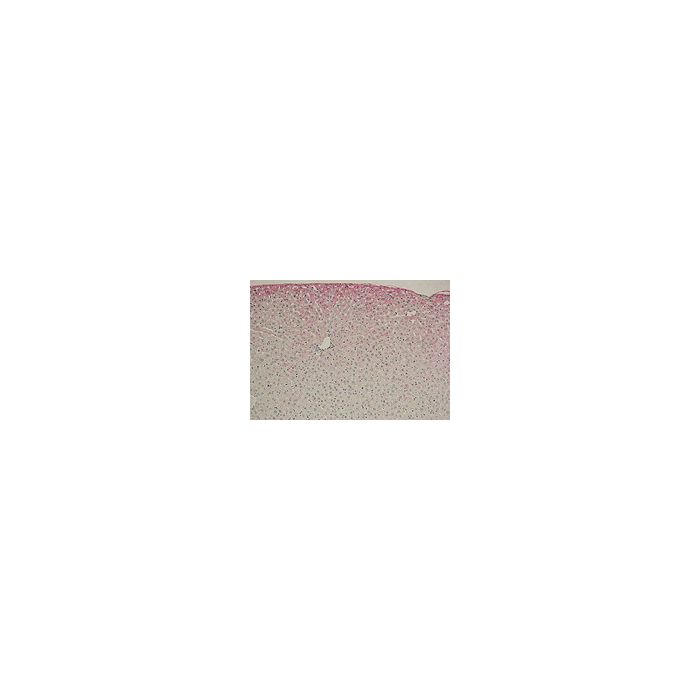Cookie Policy: This site uses cookies to improve your experience. You can find out more about our use of cookies in our Privacy Policy. By continuing to browse this site you agree to our use of cookies.
JaICA
anti-Dibromo-tyrosine [DiBrY], mAb (3A5)

| Product Details | |
|---|---|
| Product Type | Monoclonal Antibody |
| Properties | |
| Clone | 3A5 |
| Isotype | Mouse IgG1κ |
| Immunogen/Antigen | Brominated keyhole limpet hemocyanin. |
| Application |
ELISA |
| Crossreactivity |
All Human |
| Specificity |
Recognizes dibromotyrosine (DiBrY), N-acetylated dichloro tyrosine (NAcDiClY), diiodo tyrosine (DiIY), N-bromosuccinimide-treated BSA, HOCl-treated BSA and dibromo-tyrosone conjugated BSA (halogene-modified tyrosine at both 3- and 5-position). Does not cross-react with dityrosine-conjugated BSA, peroxynitrite-treated BSA, tyrosine (Y), chrolotyrosine(ClY), 3-3’-dityrosine (DiY), 3-aminotyrosine (NH2Y), 3-nitrotyrosine (NO2Y), phenylalanine (Phe), o-phosphotyrosine, 3,4-dihydroxyphenylacetic acid (DOPA) and 2-hydroxy-4-phenylacetic acid. Weakly cross-reacts with Bromotyrosine (BrY). |
| Purity Detail | Protein A purified. |
| Formulation | Lyophilized. Contains 10mM Phosphate buffered saline (pH7.4). |
| Reconstitution | Reconstitute with 200μL of distilled water. |
| Isotype Negative Control | |
| Other Product Data |
Click here for Original Manufacturer Product Datasheet |
| Declaration | Manufactured by JaICA. |
| Shipping and Handling | |
| Shipping | BLUE ICE |
| Short Term Storage | +4°C |
| Long Term Storage | -20°C |
| Handling Advice | Avoid freeze/thaw cycles. |
| Use/Stability | Stable for at least 3 years after receipt when stored at -20°C. |
| Documents | |
| Protocols |
 Download PDF Download PDF |
| Product Specification Sheet | |
| Datasheet |
 Download PDF Download PDF |
Neutrophils and eosinophils play an important role in the defence system against microbial infection. Myeloperoxidase (MPO) and eosinophil peroxidase (EPO) are known to catalyze formation of hypochlorous acid (HOCl) and hypobromous acid (HOBr). These reactive intermediates may react with proteins, lipids and nucleotides, and it has been reported to form tyrosine halogenation such as dibromotyrosine (DiBrY). DiBrY is a Br-modified tyrosine at 3- and 5- position, which is one of the major oxidative products derived from neutrophil myeloperoxidase. DiBrY may be a novel biomarker for tissue damage which is related to inflammatory and allergic disorders.
- Immunogenicity of a brominated protein and successive establishment of a monoclonal antibody to dihalogenated tyrosine: Y. Kato, et al.; Free Rad. Biol. Med. 38, 24 (2005)







![anti-4-Hydroxy-2-hexenal [4-HHE], mAb (HHE53)](https://update.adipogen.com/media/catalog/product/placeholder/default/adipogen_logo_bw_3.png)